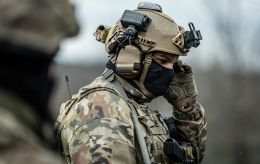NATO to launch Baltic Sea drills on repelling Russian attack for the first time
 Germany's Navy chief Vice-Admiral Jan Christian Kaack (flickr.com/au_unistphotostream)
Germany's Navy chief Vice-Admiral Jan Christian Kaack (flickr.com/au_unistphotostream)
The NATO states and their partners will conduct the largest naval military drills in the Baltic Sea, involving approximately 30 ships and over 3,000 military personnel from Western nations. For the first time, they will practice how to respond to a Russian assault in the region, according to Germany's Navy chief Vice-Admiral Jan Christian Kaack, Reuters reports.
"We are sending a clear message of vigilance to Russia: Not on our watch," he said. "Credible deterrence must include the ability to attack."
The two-week Northern Coasts exercise, set to start Sep 9, will see troops from all NATO countries on the Baltic Sea, plus soon-to-be member Sweden and non-Baltic allies the U.S., Canada, the Netherlands, Belgium, and France, train side by side.
They will practice amphibious operations and strikes from sea to land.
According to Kaack, the U.S. Navy will send the Mesa Verde into the drills, a ship of more than 200 meters in length, designed to transport and land some 800 marines in an amphibious assault.
Securing the sea routes through the Baltic Sea is another focus of the exercise that will take place off the coasts of Latvia and Estonia.
"Finland and the Baltic states depend almost 100% on the maritime supply routes through the Baltic Sea," Kaack noted. "Should the Suwalki Gap be blocked - and this can be done easily as there are only two roads and one railroad line - then we are left with the sea routes only, and that's where we will then have to make our way through."
The Suwalki Gap is a narrow land corridor approximately 65 kilometers long that serves as the sole connection linking the Baltic countries with Poland and the main territory of NATO in Europe.

